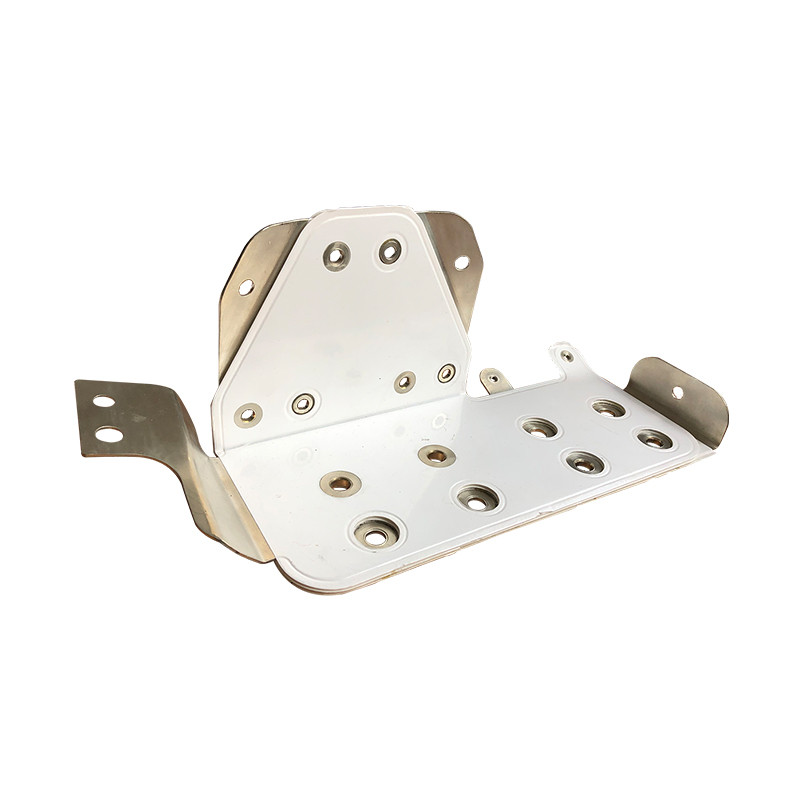

Морате бити пријављени да
Category


Фотографије су само у информативне сврхе. Погледајте спецификацију производа
please use latin characters
Busbar je tehnološki napredno rešenje za prenos električne energije, idealno za primene koje zahtevaju visok učinak i nisku induktivnost. Busbari se odlikuju višeslojnom strukturom u kojoj su slojevi koji provode struju odvojeni dielektričnim materijalom. Ove veze karakterišu niska impedansa, pouzdanost i pomažu u ubrzavanju procesa montaže i uštedi prostora u poređenju sa tradicionalnim ožičenjem.
Busbari dostupni u kompaniji DACPOL izrađuju se po narudžbini i prema crtežima klijenta.
| Radni napon | 0~20kV |
| Nominalna struja | 0~3600A |
| Maksimalna dimenzija (gabarit) | 900~1900MM |
| Test zapaljivosti | UL94 V-0 ; EN45545 |
| Materijal provodnika | T2Cu、1060 AL |
| Površinska obrada provodnika | posrebrivanje, pocinčavanje, poniklovanje |
| Vrste spojeva | presovanje, zakivanje, zavarivanje |
| Izolacioni otpor | 20MΩ~ ∞ |
| Delimična pražnjenja | Manje od 10PC |
| Radni temperaturni opseg | -40+105 °C |
| Izolacioni materijali | PET , PI , NOMEX, epoksidna smola |
U železničkom saobraćaju laminirani busbari su neizostavni deo električnih sistema, obezbeđujući pouzdan prenos energije pri visokim naponima i strujama. Zahvaljujući svojoj niskoinduktivnoj konstrukciji, minimizuju energetske gubitke, što je ključno za efikasnost pogonskih sistema.
Laminirani busbari se koriste u energetskim mrežama, gde je važna otpornost na visoke struje i napone. Busbari obezbeđuju siguran i stabilan prenos energije u elektranama i trafostanicama, minimizujući gubitke izazvane induktivnošću.
U električnim sistemima vozila, posebno kod električnih i hibridnih automobila, laminirani busbari se koriste za upravljanje protokom struje u zahtevnim uslovima rada. Obezbeđuju stabilnost i sigurnost u sistemima niskog i srednjeg napona.
U vetroturbinama busbari se koriste za prenos energije iz generatora u mrežu. Zahvaljujući otpornosti na spoljne uticaje i niskoj induktivnosti, idealni su za rad u teškim uslovima kao što su promene temperature i visoka opterećenja. Laminirani busbari se takođe koriste u fotonaponskim sistemima za efikasan prenos električne energije iz solarnih panela. Njihova višeslojna struktura obezbeđuje stabilnost i visok učinak, što je ključno za velike solarne instalacije.
Да ли вас занима овај производ? Да ли су вам потребне додатне информације или појединачне цене?
морате бити пријављени
Busbar je tehnološki napredno rešenje za prenos električne energije, idealno za primene koje zahtevaju visok učinak i nisku induktivnost. Busbari se odlikuju višeslojnom strukturom u kojoj su slojevi koji provode struju odvojeni dielektričnim materijalom. Ove veze karakterišu niska impedansa, pouzdanost i pomažu u ubrzavanju procesa montaže i uštedi prostora u poređenju sa tradicionalnim ožičenjem.
Busbari dostupni u kompaniji DACPOL izrađuju se po narudžbini i prema crtežima klijenta.
| Radni napon | 0~20kV |
| Nominalna struja | 0~3600A |
| Maksimalna dimenzija (gabarit) | 900~1900MM |
| Test zapaljivosti | UL94 V-0 ; EN45545 |
| Materijal provodnika | T2Cu、1060 AL |
| Površinska obrada provodnika | posrebrivanje, pocinčavanje, poniklovanje |
| Vrste spojeva | presovanje, zakivanje, zavarivanje |
| Izolacioni otpor | 20MΩ~ ∞ |
| Delimična pražnjenja | Manje od 10PC |
| Radni temperaturni opseg | -40+105 °C |
| Izolacioni materijali | PET , PI , NOMEX, epoksidna smola |
U železničkom saobraćaju laminirani busbari su neizostavni deo električnih sistema, obezbeđujući pouzdan prenos energije pri visokim naponima i strujama. Zahvaljujući svojoj niskoinduktivnoj konstrukciji, minimizuju energetske gubitke, što je ključno za efikasnost pogonskih sistema.
Laminirani busbari se koriste u energetskim mrežama, gde je važna otpornost na visoke struje i napone. Busbari obezbeđuju siguran i stabilan prenos energije u elektranama i trafostanicama, minimizujući gubitke izazvane induktivnošću.
U električnim sistemima vozila, posebno kod električnih i hibridnih automobila, laminirani busbari se koriste za upravljanje protokom struje u zahtevnim uslovima rada. Obezbeđuju stabilnost i sigurnost u sistemima niskog i srednjeg napona.
U vetroturbinama busbari se koriste za prenos energije iz generatora u mrežu. Zahvaljujući otpornosti na spoljne uticaje i niskoj induktivnosti, idealni su za rad u teškim uslovima kao što su promene temperature i visoka opterećenja. Laminirani busbari se takođe koriste u fotonaponskim sistemima za efikasan prenos električne energije iz solarnih panela. Njihova višeslojna struktura obezbeđuje stabilnost i visok učinak, što je ključno za velike solarne instalacije.
Vaša zahvalnost na komentar ne može biti registrovana
Prijavite nepristojan komentar
Prija nepristojnog komentara registrovana
Vaša prijava nepristojnog komentara ne može biti registrovana
Napišite vaš komentar
Komentar poslat
Vaš komentar ne može biti registrovan
